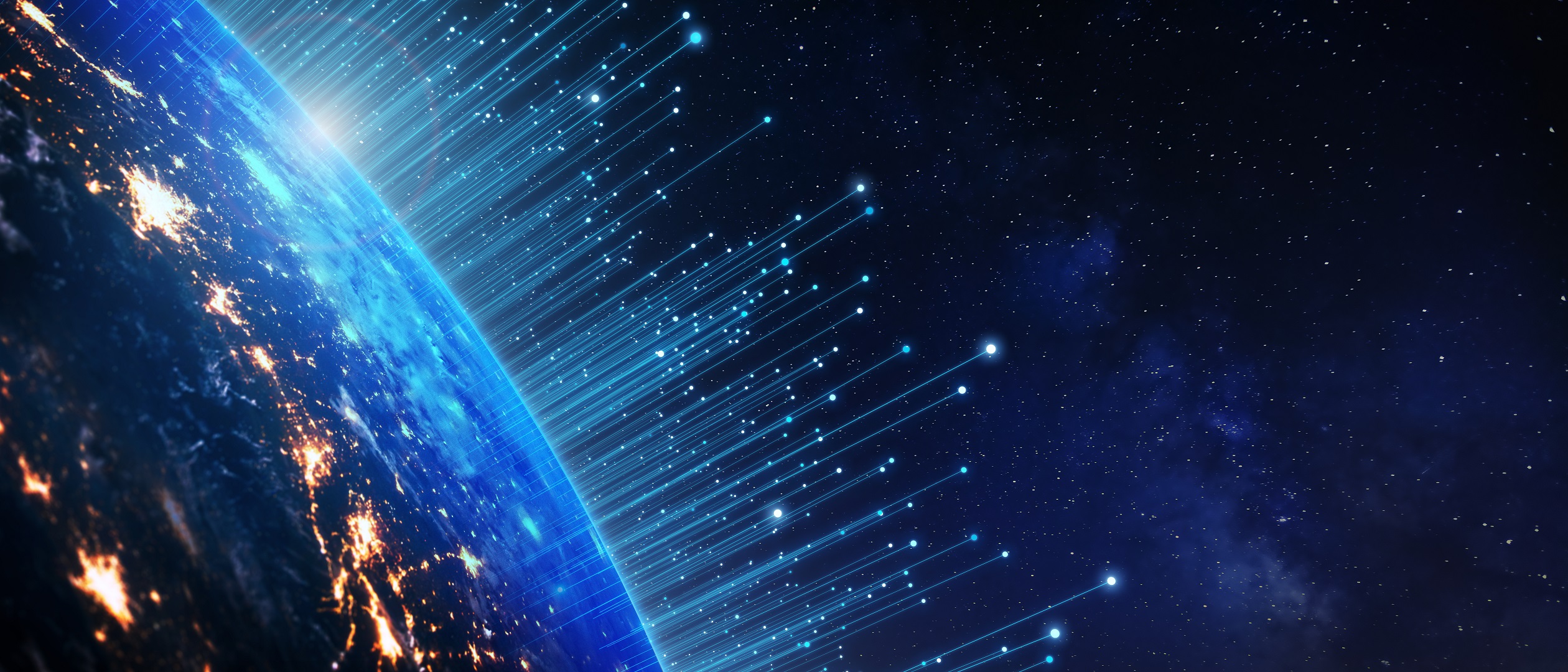Space, Cybersecurity, and AI: Trends to Watch in 2025 and Beyond
August 13, 2025As commercial space and AI-powered technology continue to expand, so does the potential for opportunistic cyberattacks. From satellites and ground stations to data links and control systems, every layer of space-Earth infrastructure faces vulnerability. This convergence of space, cybersecurity, and AI is set to challenge and reshape how we think about national security, critical infrastructure, and global cooperation.
How Do Space, Cybersecurity, and AI Work Together?
The 2022 cyberattack on Viasat, which disrupted Ukrainian communications just before Russia’s invasion, was a wake-up call for the global space community. It demonstrated how space and cyber warfare can no longer be considered separate domains. Satellites rely on terrestrial networks for command and control, making them vulnerable to both physical and digital threats. A single breach in a ground station or uplink can compromise an entire satellite constellation, affecting GPS, communications, and even military operations.
The growing use of commercial satellites for defense and intelligence purposes has also blurred lines between civilian and military targets, making commercial space assets more attractive targets for state-sponsored cyber actors. As more countries and private companies launch satellites, the attack surface expands exponentially. The U.S. Department of Defense has acknowledged that commercial space systems must now be considered part of the broader military cyber battlefield, requiring integrated defense strategies that span both domains.
This interdependence has led to an expansion in policy initiatives. The U.S. Cyberspace Solarium Commission 2.0 has called for stronger protections for space systems, including cloud security certifications, public-private collaboration, and the creation of a Bureau of Cyber Statistics. With nearly 12,000 active satellites already in orbit and more on the way, the urgent need for standards and governance is clear.
AI and Machine Learning in Space Cybersecurity
Space agencies and tech companies are increasingly turning to AI and machine learning technologies to detect anomalies, predict threats, and even autonomously respond to cyber intrusions in real-time, integrating these tools into every segment, from user to ground to link and orbit.
The Aerospace Corporation has been at the forefront of the space-cyber-AI evolution through their development of onboard intrusion detection systems like “SpaceCOP” that can identify suspicious activity in real-time. These innovations are part of a broader shift toward end-to-end threat awareness, where cybersecurity is embedded across the entire lifecycle and operation of assets. The goal is not just to prevent attacks, but to build cyber survivability and resilience into core functions at every level.
Challenges and Growing Pains
Despite the progress and expansion of available tools and technologies, significant challenges remain. Many space systems are built on legacy hardware and software that were never designed with cybersecurity or AI in mind. The long development cycles of space missions often means that by the time a system is launched, its cybersecurity protocols may already be outdated. Retrofitting systems is costly and complex, especially for those already in orbit.
Identifying the source of cyberattacks in space is also incredibly difficult because of the global nature of satellite communications, the lack of standardized international cybersecurity protocols for space, and the use of anonymizing technologies. This can also be further complicated by diplomatic concerns that raise the risk of escalation on top of the effects of the attack itself.
To address these issues, experts are calling for collaborative cyber defense frameworks. These would include global standards, real-time information sharing, and coordinated incident response across nations and industries. Public-private partnerships will be essential, as will the development of agile, updatable systems that can adapt to evolving threats.
This shift is also driving a significant demand for professionals with the skills ready to meet these new challenges by gaining certifications and that blend the cutting edge of aerospace engineering, cybersecurity, and AI.
Bringing Space, Cyber, and AI Together at Capitol Tech
The convergence of space, cybersecurity, and AI presents both unprecedented challenges and powerful opportunities. Capitol Technology university’s cybersecurity, AI, and space programs can equip you with the skills needed to ensure that the final frontier remains a safe and secure domain for innovation, exploration, and global connectivity. You are also invited to attend GreyCon, Capitol Tech’s inaugural professional conference exploring the intersection of these emerging fields.
To learn more, contact our Admissions team or request more information.
Written by Jordan Ford
Edited by Erica Decker
Join Us for GreyCon 2025!
Interested in exploring the intersection of space, AI, and cybersecurity? We invite you to join us for our professional tech conference on Friday, October 10, 2025!
Visit www.greycon.org for more information.




